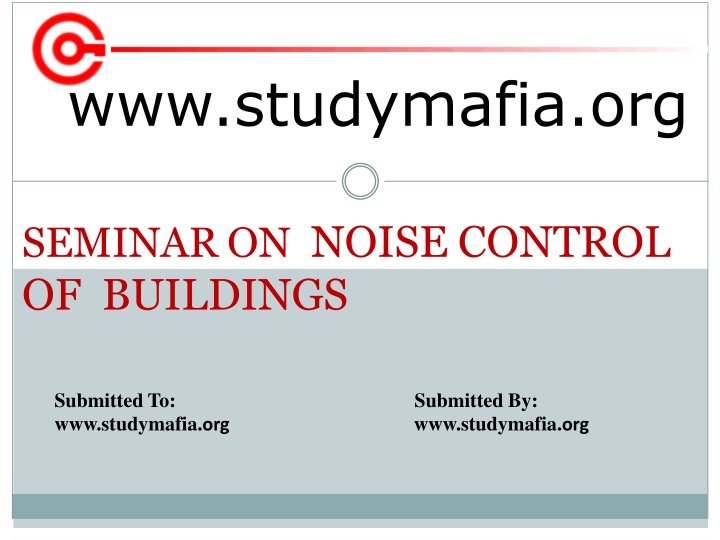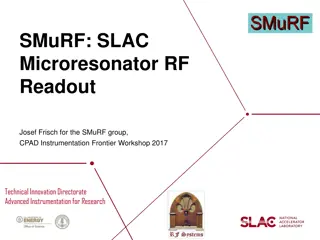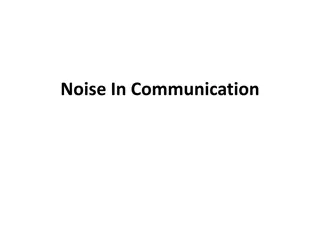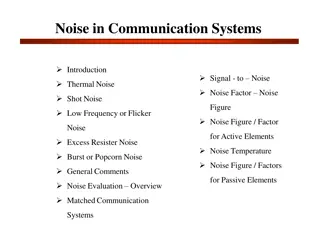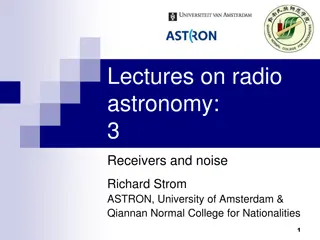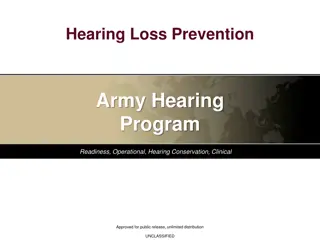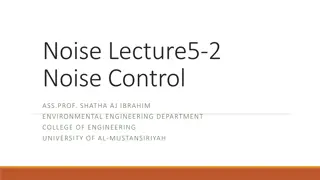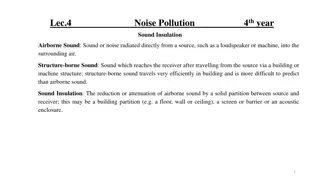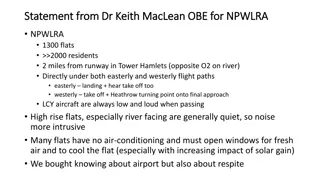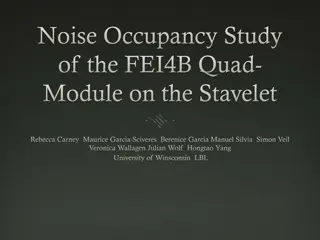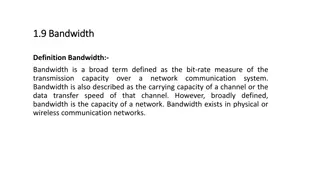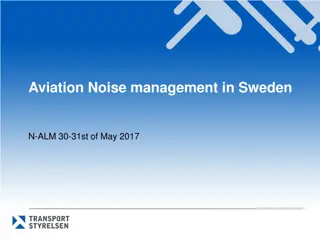Noise Control Strategies for Buildings: A Comprehensive Seminar Overview
Explore the impact of noise on health, methods to control noise in buildings, and various techniques including room acoustics, wall and floor construction, space planning, HVAC soundproofing, and more. Understand the importance of noise reduction for overall well-being and effective sound management in residential and commercial spaces.
Download Presentation

Please find below an Image/Link to download the presentation.
The content on the website is provided AS IS for your information and personal use only. It may not be sold, licensed, or shared on other websites without obtaining consent from the author.If you encounter any issues during the download, it is possible that the publisher has removed the file from their server.
You are allowed to download the files provided on this website for personal or commercial use, subject to the condition that they are used lawfully. All files are the property of their respective owners.
The content on the website is provided AS IS for your information and personal use only. It may not be sold, licensed, or shared on other websites without obtaining consent from the author.
E N D
Presentation Transcript
www.studymafia.org SEMINAR ON NOISE CONTROL OF BUILDINGS Submitted To: www.studymafia.org Submitted By: www.studymafia.org
CONTENTS Introduction Noise and Health Ways to Control Methods to control Room Acoustic Wall Construction Floor construction Space Planning HVAC and Elevator soundproofing Residential Sound ControlPractices Conclusion References
INTRODUCTION Century of development and immense noise. 24/7 surrounded by noise and sound. Principle: conversion of disturbances into electrical potentials which brain can sense. Noise from outdoor as well as within the house. NOISE : UNWANTED SOUND Noise can impede speech communication. Solution can be noise control.
NOISE AND HEALTH Regular exposure to noise may include various physical and psychological heath consequences including: Hearing Impairment Tinnitus Hypertension Ischemic heart disease Annoyance Sleep disturbances Harm to Immune System Birth defects Icreased incidence of diabetes
BASICS Principle of hearing: conversion of physical disturbances in to electrical potentials which brain can sense Listerner s ear recieve sound directly and indirectly( i.e reflection from several surfaces).
PARAMETERS Building materials aregenerally rated by their noise reduction coefficient (NRC). Sound Transmission Class (or STC) is an integer rating of how well a building partition attenuates airborne sound.
WAYS TO CONTROL Three BASIC ways to control noise 1. Replace the sound source with a quieter one. 2.Block the sound with a solid, heavy material that resists the transmission of sound waves. 3.Absorb the sound with a light, porous material that soaks up sound waves. Acoustical design issues for buildings include site noise considerations, control of noise transfer, establishing noise standards, room acoustics considerations, sound isolation, vibration control and audio/visual considerations
METHODS SOUND INSULATION SOUND ABSORPTION Through sound barrier transmission , sound is reduced. By increasing wall thickness and isolating one side of construction from other. Methods: Wall construction,Floor planning,Space Planning. It is the capability of surface to absorb sound instead of reflecting it. Good sound absorbing materials are carpet, foam, padding and fiberglass insulation. Method : Room acoustics
ROOM ACOUSTICS ROOM ACOUSTICS We receive direct and reflected sound in a room. Unwanted background noise is due to high level of reflected sound in poor acoustical rooms. To achieve acceptable acoustic characteristics various points are taken into considerations like: 1.location and extent of sound absorbing materials 2. reduction of reverberation and speech interference 3. Shape of room(for libraries)
SOUND ABSORPTION AT WORKPLACE Lay in acousticalceiling Suspended acoustical baffle
CONT. Open cell acousticalfoam Quilted sound screen
WALL CONSTRUCTION Standard partition is a single stud wall and one layer of gypsum bard on each side,the acoustic performance can be improved by using light gauge metals instead of wood studs. STC (Sound transmission class) is standard parameter to compare performance of differenent construction materials J STC
SPACE PLANNING Space planning deals with organizing spaces to avoid adverse adjacencies of noisy equipment like mechanical equipments and electrical transformer with quiet spaces . It can be the most cost-effectivenoise control technique. FLOATING FLOOR CONSTRUCTION
FLOOR CONSTRUCTION Floor and ceiling provide two acoustical function: 1.provide separation between adjacent spaces i.e, airborne sound insulation 2.reduce sound of footfalls and other impact sounds i.e, impact insulation. Using a carpet and a pad or a resilient floor underlayment improves impact insulation. WOOD FRAMEDFLOOR
HVAC NOISE CONTROL PROBLEMS SOLUTIONS not acoustically treated, noise from heating, ventilating, and air-conditioning equipment can travel from room to room in the home or in the office. 1.Fiberglass duct liner, designed for installation inside sheet metal ductwork to attenuate air rush and central equipment noise as well as to control heat loss or gain through duct walls. 2.Fiberglass duct board, combining acoustical/thermalinsulation with a reinforced foil-kraft air barrier/vapor retarder, from which complete air duct systems may be fabricated. Noise produced by fansand motors of central air equipment can be transmitted throughout the duct system. High air velocities in the duct system can cause noise-producing turbulence.
Protecting Yourself from Elevator Noise Soundproofing Reason by simply applying a layer of mass loaded vinyl to the walls. A separate wallaround the perimeter of elevator. Increasing air spacein a wall assembly will also improveisolation the sound coming from cable system attached to the elevator itself. sound coming from the elevator shaft sound caused by the motor and cables.
Residential sound control PRACTICES FIVE NOISE CONTROL MISTAKES TO AVOID 1. Thinking you don t have a noise problem. 2. Not considering noise control before a project is started. 3. Not conducting a detailed study of noisy equipment. 4. Not using a systematic approach to noise control. 5. Not sealing air leaks.
CONCLUSION Noise is becoming a very big problem day to day it is degrading our health and ecological balance as well. And one cannot remain untouched with this aspect of day to day issue. By introducing noise control in buildings we can create a less noisy residential and other constructions. As sound travels directly and throughs reflections, so to improve sound quality reflections should be minimized.
REFERENCES Google.com Studymafia.org Wikipedia.org
